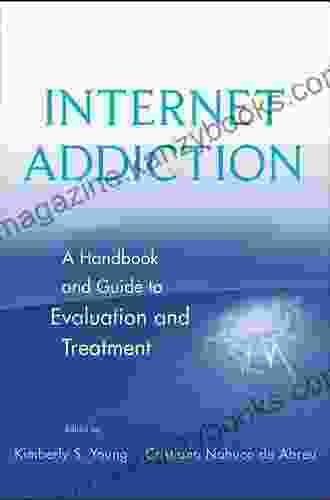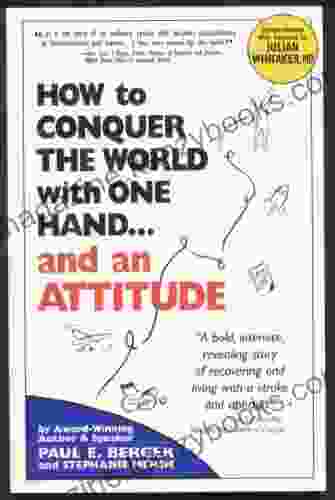Discover the Simple Guide to Nocturnal Enuresis: Diagnosis, Treatment, and a Path to Dry Nights

Nocturnal enuresis, or bedwetting, is a common childhood problem that can affect children of all ages. It can be a frustrating and embarrassing condition for both children and parents, but it is important to remember that it is not a sign of laziness or immaturity. With the proper diagnosis and treatment, most children can overcome nocturnal enuresis.
What is Nocturnal Enuresis?
Nocturnal enuresis is the involuntary urination that occurs during sleep. It is considered a normal part of childhood development, but it can become a problem if it persists beyond the age of 5 or 6. Nocturnal enuresis can be classified into two types:
4.5 out of 5
| Language | : | English |
| File size | : | 458 KB |
| Text-to-Speech | : | Enabled |
| Screen Reader | : | Supported |
| Enhanced typesetting | : | Enabled |
| Word Wise | : | Enabled |
| Print length | : | 178 pages |
| Lending | : | Enabled |
* Primary nocturnal enuresis is when a child has never been able to stay dry at night. * Secondary nocturnal enuresis is when a child who was previously dry at night starts wetting the bed again.
What Causes Nocturnal Enuresis?
The exact cause of nocturnal enuresis is not known, but it is thought to be due to a combination of factors, including:
* Small bladder capacity: Children with nocturnal enuresis often have smaller bladders than other children. This means that they cannot hold as much urine and are more likely to wet the bed at night. * Overproduction of urine: Some children with nocturnal enuresis produce more urine than they can hold in their bladders. This can be due to a variety of factors, including diabetes, certain medications, and excessive fluid intake before bed. * Delayed maturation of the nervous system: The nervous system controls the muscles that hold urine in the bladder. In children with nocturnal enuresis, these muscles may not be fully developed, which can lead to bedwetting. * Genetics: Nocturnal enuresis tends to run in families, which suggests that there may be a genetic component to the condition.
How is Nocturnal Enuresis Diagnosed?
The diagnosis of nocturnal enuresis is usually based on a medical history and physical examination. Your doctor will ask about your child's symptoms, including how often they wet the bed, how much urine they produce, and whether they have any other symptoms, such as daytime wetting or difficulty urinating. Your doctor may also Free Download some tests, such as a urinalysis or a bladder ultrasound, to rule out any underlying medical conditions.
How is Nocturnal Enuresis Treated?
There are a variety of treatments for nocturnal enuresis, including:
* Behavior modification: Behavior modification techniques can help children learn to control their bladder and stay dry at night. These techniques include things like bladder training, which involves gradually increasing the amount of time that a child can hold their urine, and using a bedwetting alarm, which sounds when the child starts to wet the bed. * Medication: Medications can be used to reduce the production of urine or to help the bladder muscles hold more urine. These medications are usually used in combination with behavior modification techniques. * Surgery: Surgery is rarely necessary to treat nocturnal enuresis. However, it may be an option for children who have severe symptoms that do not respond to other treatments.
What is the Outlook for Nocturnal Enuresis?
The outlook for nocturnal enuresis is generally good. Most children will eventually outgrow the condition. However, some children may continue to wet the bed into adolescence or even adulthood. With the proper treatment, most children can achieve dry nights.
Nocturnal enuresis is a common childhood problem that can be frustrating and embarrassing for both children and parents. However, it is important to remember that it is not a sign of laziness or immaturity. With the proper diagnosis and treatment, most children can overcome nocturnal enuresis.
If you are concerned about your child's bedwetting, talk to your doctor. They can help you determine the cause of the problem and recommend the best course of treatment.
4.5 out of 5
| Language | : | English |
| File size | : | 458 KB |
| Text-to-Speech | : | Enabled |
| Screen Reader | : | Supported |
| Enhanced typesetting | : | Enabled |
| Word Wise | : | Enabled |
| Print length | : | 178 pages |
| Lending | : | Enabled |
Do you want to contribute by writing guest posts on this blog?
Please contact us and send us a resume of previous articles that you have written.
 Book
Book Novel
Novel Page
Page Chapter
Chapter Text
Text Story
Story Genre
Genre Reader
Reader Library
Library Paperback
Paperback E-book
E-book Magazine
Magazine Newspaper
Newspaper Paragraph
Paragraph Sentence
Sentence Bookmark
Bookmark Shelf
Shelf Glossary
Glossary Bibliography
Bibliography Foreword
Foreword Preface
Preface Synopsis
Synopsis Annotation
Annotation Footnote
Footnote Manuscript
Manuscript Scroll
Scroll Codex
Codex Tome
Tome Bestseller
Bestseller Classics
Classics Library card
Library card Narrative
Narrative Biography
Biography Autobiography
Autobiography Memoir
Memoir Reference
Reference Encyclopedia
Encyclopedia Madeline Gerwick Brodeur
Madeline Gerwick Brodeur Somer Mccowan
Somer Mccowan Sanjiv Purba
Sanjiv Purba Ralph Hughes
Ralph Hughes Suzanne Robitaille
Suzanne Robitaille Kien Vuu
Kien Vuu Mitch Stokes
Mitch Stokes Vivek Singh
Vivek Singh Maria Ross
Maria Ross Peter Jovanovic
Peter Jovanovic Khadiyah Preciado
Khadiyah Preciado Kenneth Ring
Kenneth Ring Kenneth Thomasma
Kenneth Thomasma Ken Best
Ken Best Kevin Forster
Kevin Forster Kristen Mancinelli
Kristen Mancinelli Tony Clark
Tony Clark William Seymour
William Seymour Kelly Leveque
Kelly Leveque Kevin Passmore
Kevin Passmore
Light bulbAdvertise smarter! Our strategic ad space ensures maximum exposure. Reserve your spot today!

 Floyd RichardsonUnveiling the Extraordinary in the Ordinary: A Review of "Normal Life Memoir"
Floyd RichardsonUnveiling the Extraordinary in the Ordinary: A Review of "Normal Life Memoir"
 Julio CortázarTake Charge of Your Chronic Pain: A Comprehensive Guide to Regaining Control...
Julio CortázarTake Charge of Your Chronic Pain: A Comprehensive Guide to Regaining Control... Geoffrey BlairFollow ·17.2k
Geoffrey BlairFollow ·17.2k Henry GreenFollow ·4.7k
Henry GreenFollow ·4.7k Carlos FuentesFollow ·2.7k
Carlos FuentesFollow ·2.7k Gregory WoodsFollow ·15.1k
Gregory WoodsFollow ·15.1k Evan HayesFollow ·12.9k
Evan HayesFollow ·12.9k Jeremy CookFollow ·13.7k
Jeremy CookFollow ·13.7k Jaylen MitchellFollow ·4.3k
Jaylen MitchellFollow ·4.3k John SteinbeckFollow ·16.5k
John SteinbeckFollow ·16.5k

 Ernesto Sabato
Ernesto SabatoLoving Table: Creating Memorable Gatherings
Gatherings...

 Mark Twain
Mark TwainLifestyle After Cancer: The Facts
Cancer is a life-changing...

 Keith Cox
Keith CoxUnlocking the Nutritional Needs of Individuals with...
Individuals with physical disabilities...

 Rubén Darío
Rubén DaríoHandbook And Guide To Evaluation And Treatment
Empowering Healthcare...

 Andy Hayes
Andy HayesUnveiling the Truth: "Garden Myths" by Robert Pavlis...
The world of gardening is often filled with a...
4.5 out of 5
| Language | : | English |
| File size | : | 458 KB |
| Text-to-Speech | : | Enabled |
| Screen Reader | : | Supported |
| Enhanced typesetting | : | Enabled |
| Word Wise | : | Enabled |
| Print length | : | 178 pages |
| Lending | : | Enabled |










